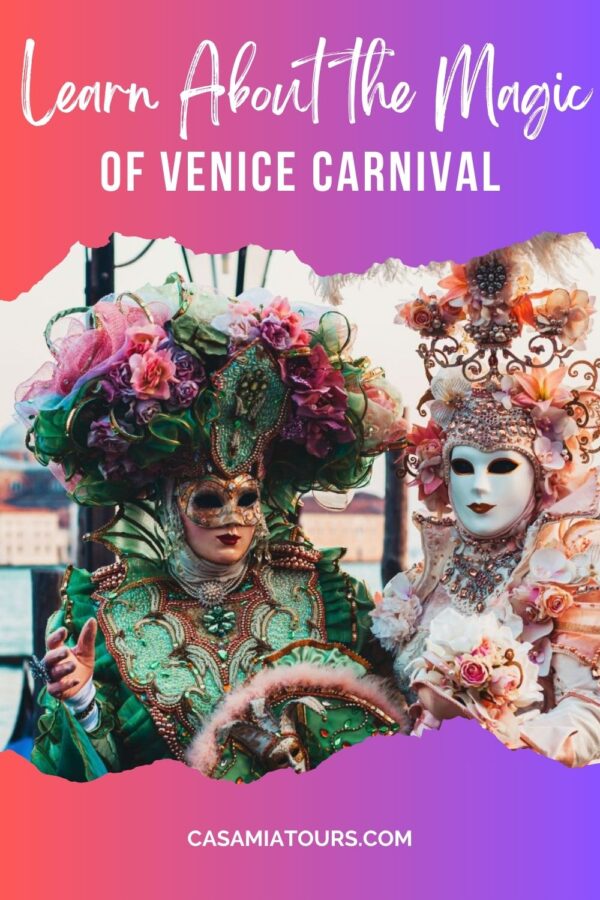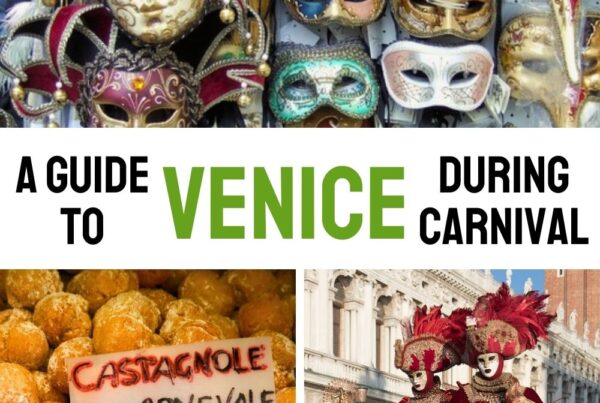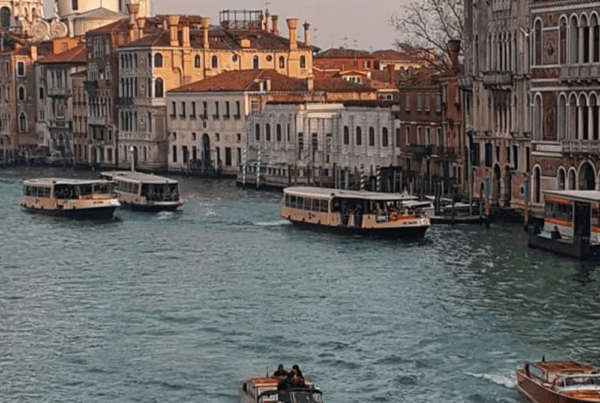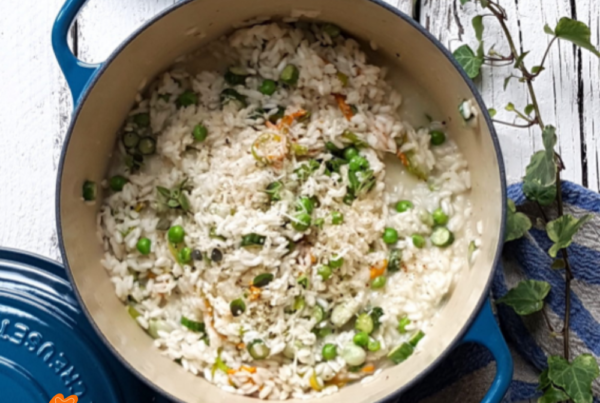After the misty, grey days of January comes the excitement and color of Venice Carnival, one of our favorite times of year to be in the city. Taking place in the two weeks before Lent begins, Carnival in Venice is a fun and exciting festival that is celebrated by locals and visitors alike, but what is the point of these celebrations? Why do people wear masks and elaborate costumes? Here we’ll answer these questions and more:
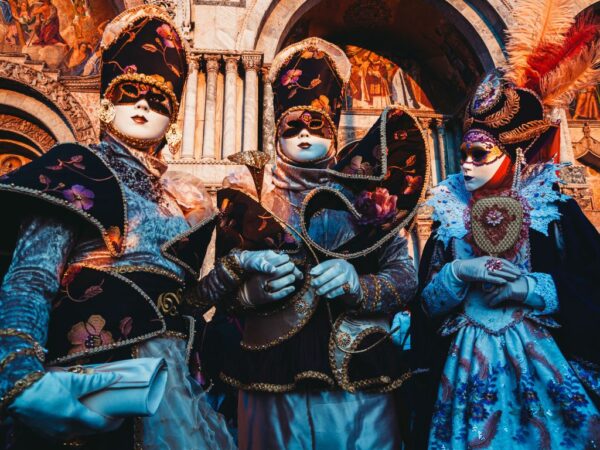
What is the Venice Carnival?
So what actually is the Venice Carnival? Today it takes place every year in the two weeks before Lent starts on Ash Wednesday, with the date changing depending on when Easter falls. Over these two weeks there are lots of different events that take place, but also people just spend time in the city soaking up the fun atmosphere.
The idea is to celebrate the end of winter, with one last blow-out before the traditional fasting period of Lent. Fat Tuesday (also known as Shrove Tuesday or Mardi Gras) is always the last day of Carnival in Venice when you eat up all the eggs, meat, dairy and rich food ahead of the 40 days of penitence leading up to Easter.
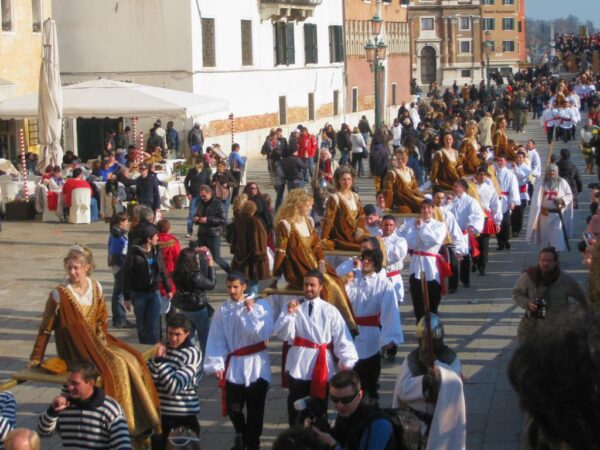
Depending on precisely when you’re in Venice, you can see a parade of boats along the Grand Canal, concerts in Saint Mark’s Square, attend special art exhibits and cultural events, go to masquerade balls, see street performances, carnival floats and much more. Check out the official site for all the details of this year’s events, but remember to confirm the dates in advance before planning your trip!
You’ll see plenty of people dressed up and wearing Venetian masks throughout Carnival season, day and night, so even if you just want to visit for a short while you’ll get a sense of what it’s all about.
History and Origins of the Venetian Carnival
The Carnival tradition dates back a long time. Records from as early as the 11th century note the existence of celebrations in the days before Lent began, but it really took off around 150 years later.
In 1162 the Venetian Republic won a decisive battle against an agent of the German Holy Roman Emperor. The German ruler had been trying to conquer northern Italy, particularly Venice, but the Venice Republic’s victory prevented this.
At the end of the battle, the leader of the opposing army, the Patriarch of Aquileia, was captured and brought back to Venice. He was eventually released, on the condition that he send Venice animals and bread each year as payment.
The victory celebrations in Venice coincided with Carnival timings, and the slaughter of the animals sent as payment took place in a big public ceremony in Piazza San Marco. This meat was distributed on Fat Tuesday to the people of Venice.
From this point, Venice Carnival got more and more popular. The celebrations got more extravagant, costumes more extreme and over the centuries it became known all over Europe as an event to attend if you wanted a good time. Wearing Carnival masks made people anonymous, people would dance in the streets, drink and eat a lot, and both rich and poor would mingle throughout the festival.
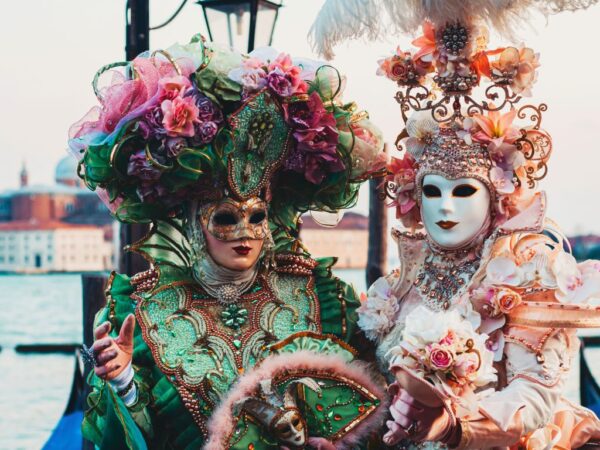
The modern day carnival celebrations
Over time the Venetian Republic faded in power, and by the 1700’s it was controlled by the Austrians. The new rulers did not approve of the wild Carnival celebrations and in 1797 it was outlawed completely by Francis II of Austria, as was wearing masks.
It was not until 1979 that the Italian government decided to revive the Carnevale di Venezia. This was part of a program to reinvigorate the city and its history, making it one of the major tourist attractions of the city. The new Carnival program was a huge success and now it is one of the busiest periods of the year for Venice.
Venetian Masks
Venetian masks are an integral part of the Venice Carnival, and of Venetian history. For a long time masks were worn for many occasions, with different masks being worn by different people and classes.
Masks were so important that mask makers had their own guild, with fierce competition for who could create the most beautiful and elaborate masks. Made from leather, porcelain or sometimes even glass, the masks would sometimes be left plain but often highly decorated.
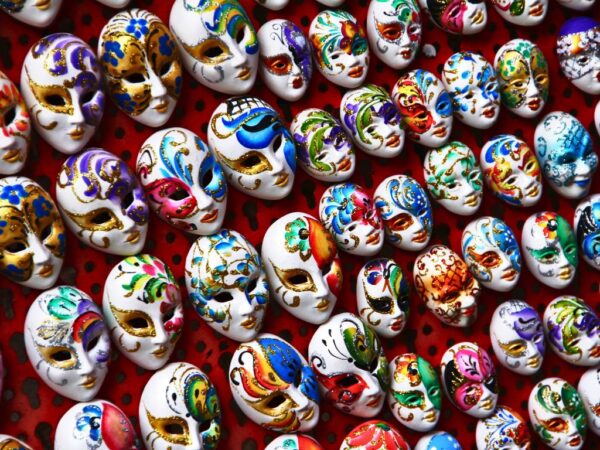
Today a Venetian mask shop mostly sells masks made from a type of papier-mâché, which are hand painted and therefore each one is unique. If you see plastic masks or rows of identical designs, this is not an authentic mask shop!
Venetian masks come in various styles, here are the most common ones to look out for:
Bauta
This mask completely covers a person’s face, with a pointed chin piece that allows you to eat and drink without taking the mask off.
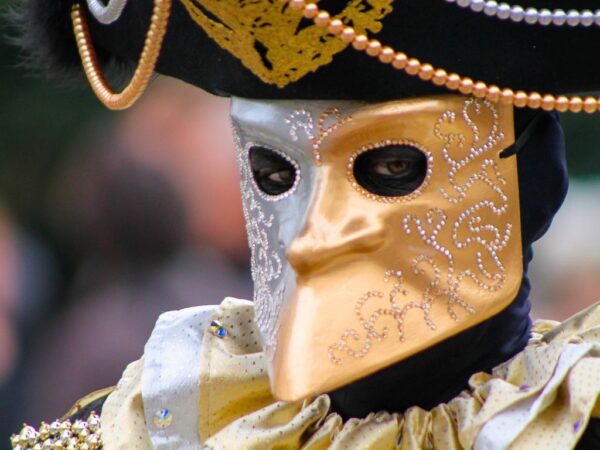
Historically they were plain white, and often paired with a tricorn hat and a big black cape, but nowadays Bauta masks tend to have some decoration on them.
This is one of the most well-known mask styles and if you attend one of the masquerade balls you will definitely see plenty of people wearing it!
Commedia dell’Arte Masks
The Commedia dell’Arte was an early type of Italian theater with stock characters who would get themselves in all sorts of situations. This was very popular in Venice and the fact the characters often wore masks translated very easily to Venice’s carnevale!
The Colombina is a half mask covering the top half of a person’s face, which is either tied on to your head or to a baton which you would hold in place on your face. Traditionally a mask for women, they are usually covered in decoration, sometimes with feathers and lace attached to them.
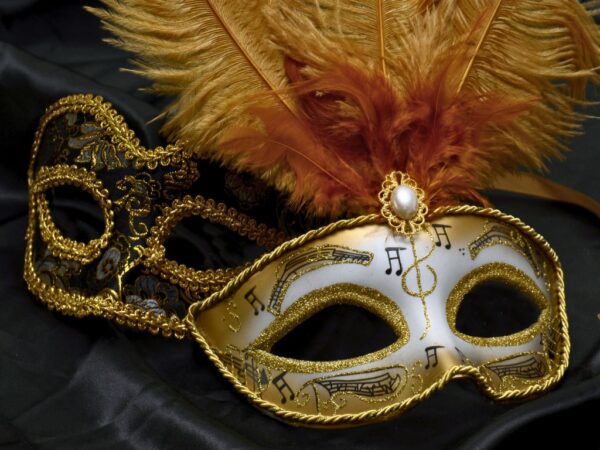
The Pantalone isn’t seen so much today, with a large hooked nose and bright patterned mask, but the harlequin mask of Arlecchino is still very popular. He represents the joker and his mask resembles a classic court jester headdress.
The Plague Doctor mask
This is possibly the most recognizable Venetian mask but is in fact a modern addition to the Venice Carnival.
The combination of long beaked mask, black hat, gloves and long black robes was first recorded in the 1600’s in Europe. The Black Death was three hundred years earlier but plagues had not stopped spreading periodically and the costume was devised as a way for doctors to treat patients with a degree of safety.
Venice’s Carnevale celebrations did not include a plague doctor in the 17th and 18th century before the festival was banned. When the event was restarted in the 1970’s, the long beak masks became popular and are much more decorative than the original versions ever would have been!
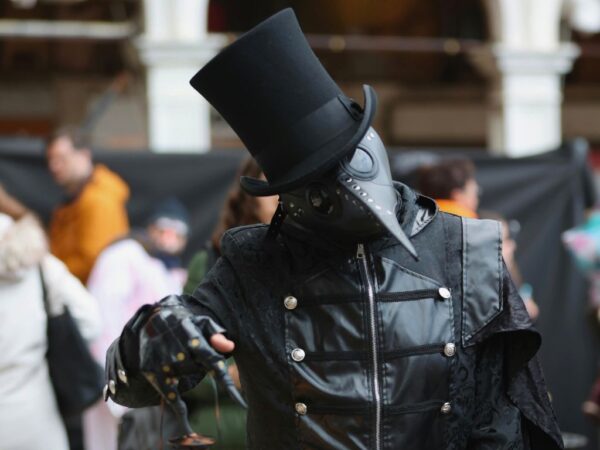
The Venice Carnival is a must-do if you’re in Veneto or really anywhere in Italy in February. The events in iconic places like Saint Mark’s Square and the Rialto bridge are so much fun, and there really is nothing like walking around and seeing everyone dressed up – people really commit to the theme! Talk to us today if you’d like to find out more about exploring Venice and the wider Veneto region during Carnival.
